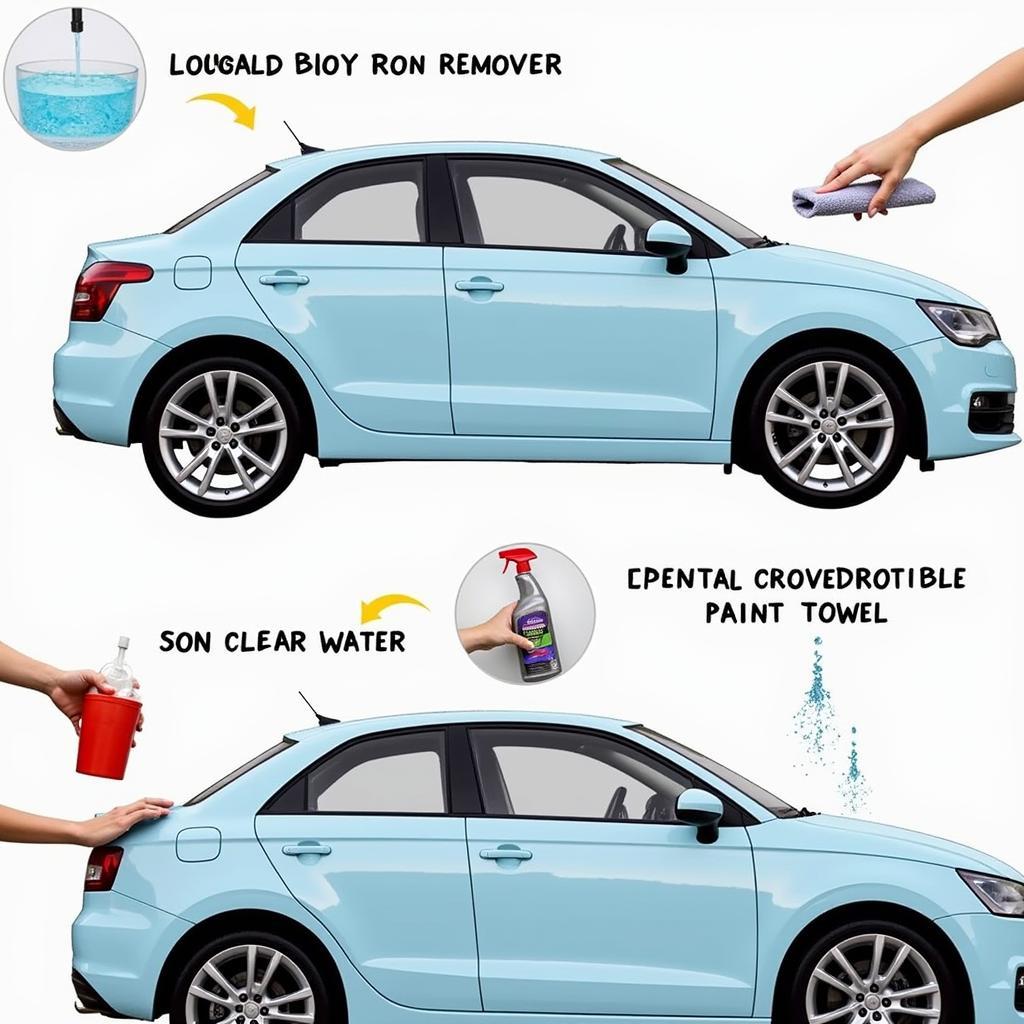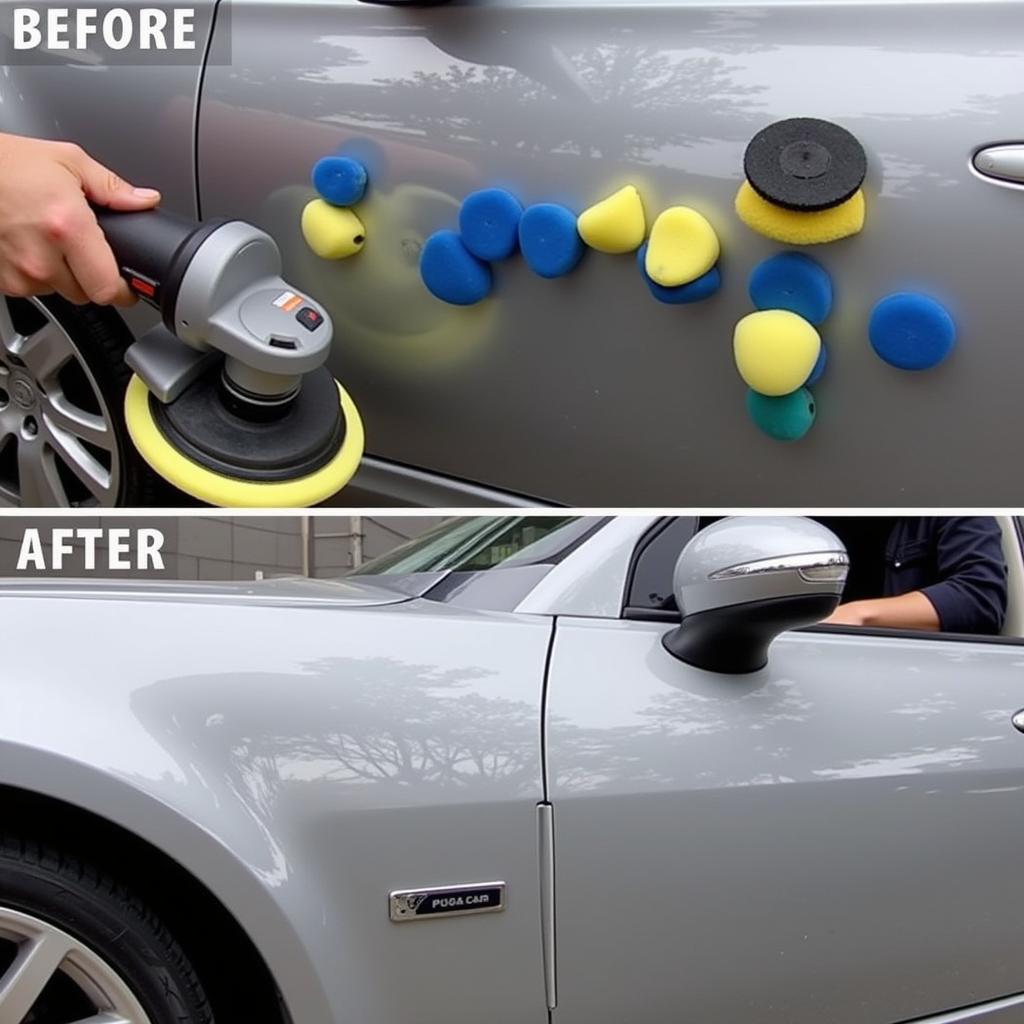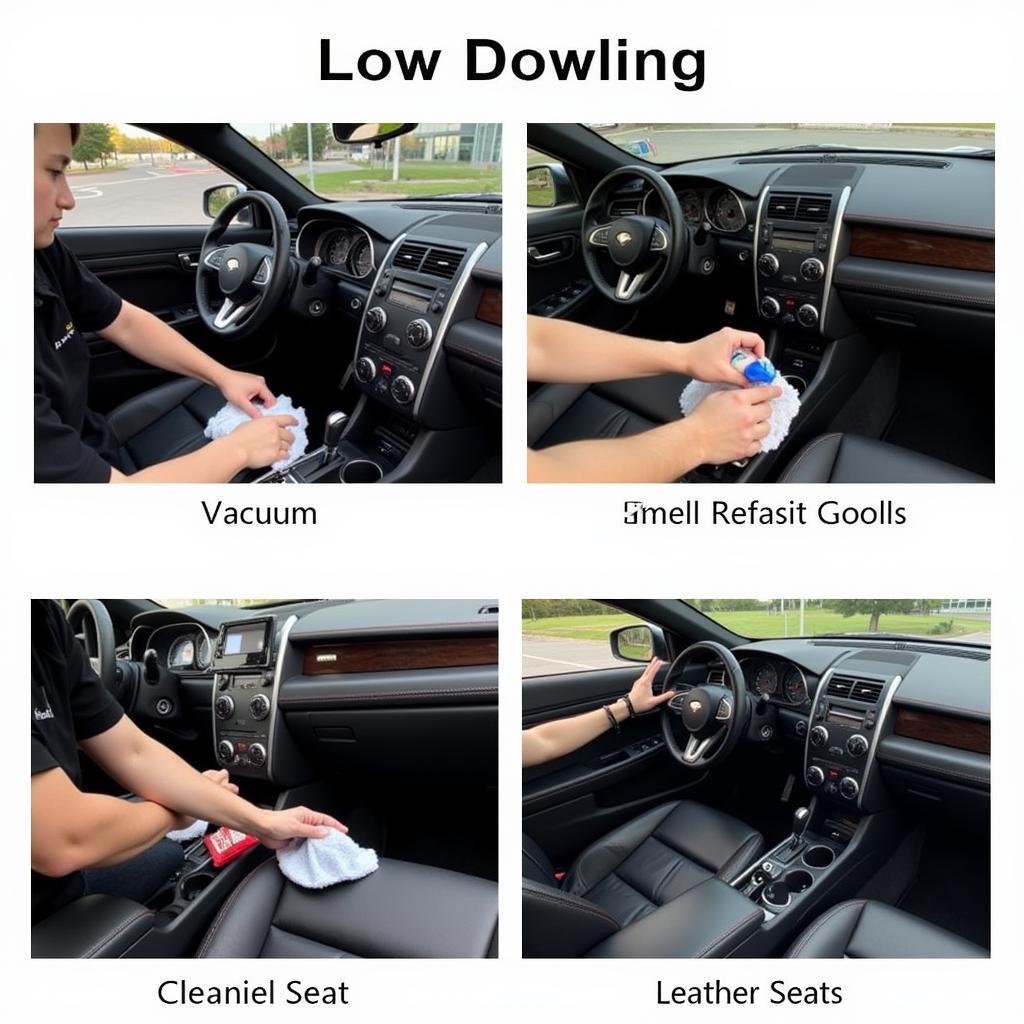Detailing a car goes far beyond a simple wash and wax. It’s a meticulous process that restores and protects your vehicle’s finish, both inside and out, leaving it looking showroom-new. This comprehensive guide will walk you through every step of How To Fully Detail A Car, from the initial wash to the final touches.
Washing and Decontamination: The Foundation of a Great Detail
Before any polishing or protection can be applied, the car needs to be thoroughly cleaned and decontaminated. This removes loose dirt, grime, and contaminants that can scratch the paint during the polishing process. Start with a pre-wash using a quality snow foam to loosen dirt and grime. Then, wash the car using the two-bucket method with a pH-neutral car shampoo and a microfiber wash mitt. Rinse thoroughly and dry with a high-quality microfiber drying towel.
After washing, it’s crucial to decontaminate the paint. Iron particles from brake dust, industrial fallout, and other environmental contaminants can embed themselves in the clear coat. Use an iron remover to dissolve these particles, followed by a clay bar treatment to remove any remaining bonded contaminants. This leaves the paint surface perfectly smooth and ready for the next stage.
 Car Wash and Decontamination Process
Car Wash and Decontamination Process
Paint Correction: Restoring the Shine
Once the car is clean and decontaminated, you can begin the paint correction process. This involves using a polishing machine and various polishing pads and compounds to remove swirl marks, scratches, and other imperfections in the clear coat. This step requires some skill and practice, so if you’re not comfortable using a machine polisher, it’s best to leave this to a professional. However, learning how to fully detail a car involves understanding this crucial step.
 Polishing Car Paint to Remove Swirl Marks and Scratches
Polishing Car Paint to Remove Swirl Marks and Scratches
For more specific advice, you can check out our guide on how to fully detail a car exterior.
Protection: Shielding the Paint
After paint correction, it’s essential to protect the newly restored finish. This involves applying a sealant or wax to create a barrier against UV rays, environmental contaminants, and minor scratches. Sealants typically offer longer-lasting protection than waxes, while waxes tend to provide a deeper gloss. Choose the product that best suits your needs and apply it according to the manufacturer’s instructions.
Interior Detailing: Creating a Pristine Cabin
Interior detailing is just as important as exterior detailing. Start by thoroughly vacuuming the carpets and upholstery, paying attention to crevices and hard-to-reach areas. Use a dedicated interior cleaner to clean all surfaces, including the dashboard, door panels, and center console. Don’t forget to clean and condition leather seats to keep them supple and prevent cracking. Just like exterior detailing, understanding how to fully detail car interior is essential for achieving professional-level results.
 Cleaning and Conditioning Car Interior
Cleaning and Conditioning Car Interior
Finishing Touches: The Details Matter
The final touches are what separate a good detail from a great one. This includes dressing tires, cleaning windows and mirrors, and polishing exterior trim. These small details can make a big difference in the overall appearance of the car. Knowing how to fully detail a black car requires extra attention to these finishing touches, as imperfections are more visible on darker paint.
Conclusion: Achieving a Showroom Shine
Knowing how to fully detail a car is a rewarding skill that allows you to keep your vehicle looking its best. By following the steps outlined in this guide, you can achieve a professional-level detail and protect your investment for years to come. Remember that consistent care and maintenance are key to maintaining a pristine finish.
FAQs
-
How long does it take to fully detail a car? A full detail can take anywhere from 4 to 12 hours, depending on the size of the car and the condition of the paint.
-
What equipment do I need to detail a car? Essential equipment includes a pressure washer, two buckets, microfiber wash mitts and towels, a clay bar, polishing machine (optional), various polishing pads and compounds, sealants or waxes, and interior cleaning products.
-
How often should I detail my car? Ideally, you should fully detail your car every 6-12 months to maintain its appearance and protect the paint.
-
What is the difference between detailing and washing a car? Detailing is a much more thorough process than washing, involving decontamination, paint correction, and protection.
-
Can I detail my car myself? Yes, you can detail your car yourself, but it requires some knowledge and practice. If you’re not comfortable with certain steps, such as paint correction, it’s best to leave it to a professional. To find reputable detailers in your area, consult our guide on where to get car fully detailed.
-
How much does it cost to have a car professionally detailed? Professional detailing can cost anywhere from £100 to £500, depending on the services included and the size of the vehicle. For a more detailed breakdown, check out our guide on how much to fully detail a car.
-
What are some common mistakes to avoid when detailing a car? Common mistakes include using the wrong products, not washing the car properly, and not protecting the paint after correction.
For further information or assistance, please contact us via WhatsApp: +1(641)206-8880, or Email: [email protected]. Our customer service team is available 24/7.

Leave a Reply